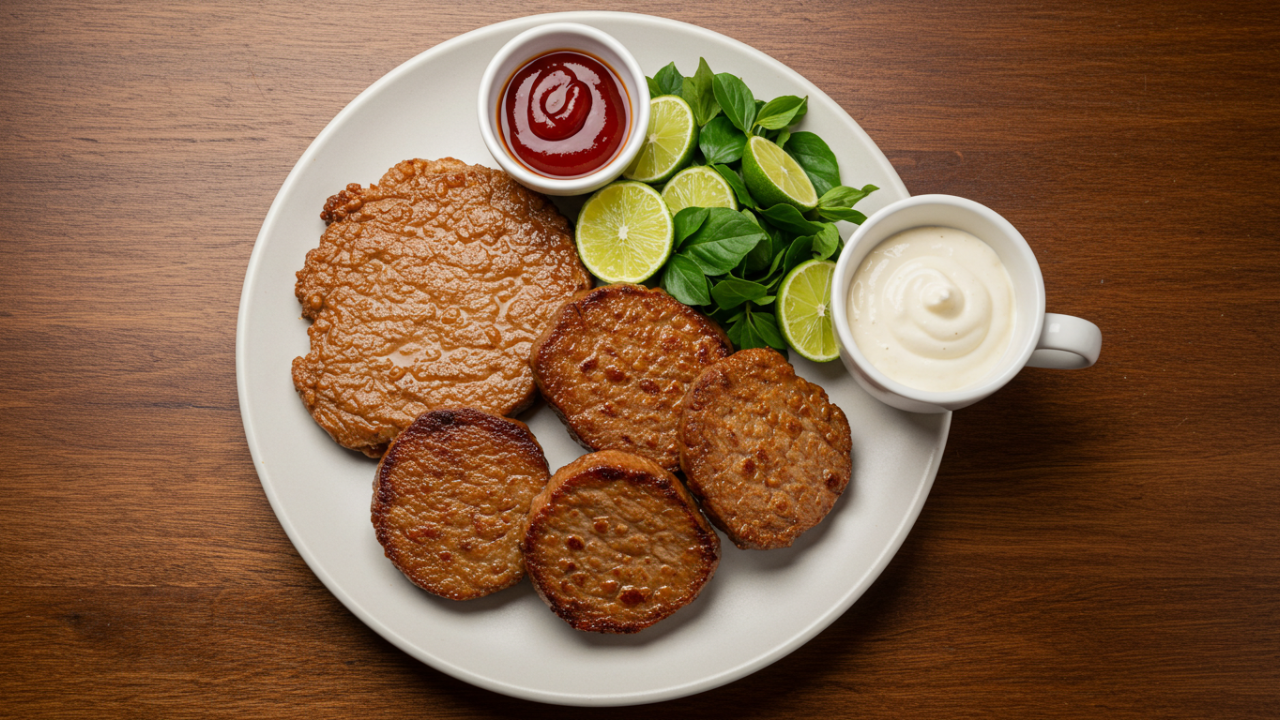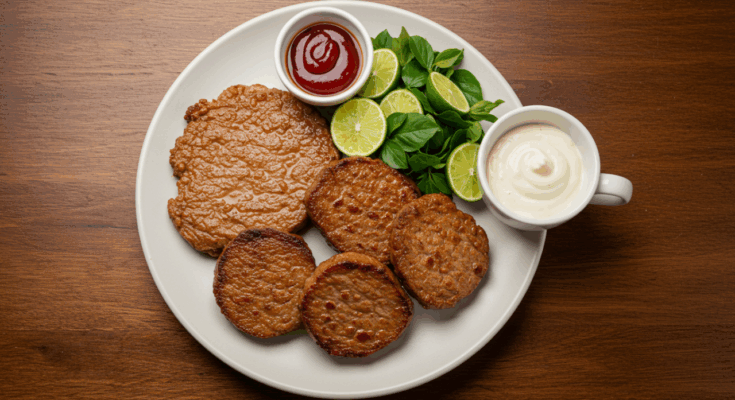In the symphony of flavors that dance on our tongues, four notes have long dominated: sweet, sour, salty, and bitter. But lurking in the background, enhancing every bite without stealing the spotlight, is umami—the fifth taste that’s quietly revolutionizing modern cooking. Often described as savory or meaty, umami adds depth and satisfaction to meals, making them more craveable and balanced. If you’ve ever wondered why a sprinkle of Parmesan elevates pasta or why miso soup feels so comforting, umami is the answer. This article delves into the world of umami, offering practical ways to harness it in your kitchen. We’ll explore its science, sources, and applications, providing actionable tips to transform everyday dishes. Whether you’re a home cook battling blandness or a food enthusiast seeking deeper flavors, understanding umami can make your meals more intuitive and enjoyable. No fancy ingredients required—just a shift in how you think about taste. Let’s unpack this game-changer and answer questions like “How do I add umami without MSG?” and “Is umami healthy?”
What is Umami?
The Discovery and History of the Fifth Taste
Umami’s story begins in early 20th-century Japan, where chemist Kikunae Ikeda noticed a unique flavor in kombu dashi, a seaweed broth central to Japanese cuisine. In 1908, he isolated glutamic acid as the culprit, coining “umami” from the Japanese words for “delicious” (umai) and “taste” (mi). This breakthrough challenged the Western four-taste model, but it took decades for global acceptance. By the 1980s, scientists confirmed umami receptors on the tongue, solidifying its status as the fifth taste.
Historically, umami has flavored human diets for millennia. Ancient Romans fermented fish into garum sauce, while Chinese cooks relied on soy sauce. Today, it’s a cornerstone in fusion cuisines, from Korean kimchi to Italian risotto. Understanding this evolution helps demystify umami—it’s not a trend but an ancient enhancer that’s now accessible to all. For beginners, start by tasting pure umami: Sip a simple broth made from dried mushrooms to experience its lingering savoriness.

The Science Behind Umami
At its core, umami stems from glutamates—amino acids that occur naturally in foods—and nucleotides like inosinate and guanylate, which amplify the effect. When these compounds hit specialized taste buds, they trigger a mouthwatering response, making flavors feel fuller and more harmonious. Unlike salt, which heightens, umami builds layers, reducing the need for excess seasoning.
Research shows umami enhances satiety, helping you feel full longer, which is why umami-rich meals like tomato soup with cheese seem so satisfying. Neurologically, it activates brain areas linked to pleasure, explaining its addictive quality in snacks. Common question: “Does umami make food addictive?” Not inherently—it’s about balance; over-reliance on processed umami (like chips) can lead to habits, but natural sources promote mindful eating.
To experiment scientifically at home, compare dishes: Make two versions of scrambled eggs—one plain, one with a dash of soy sauce. Note how the umami version tastes more complex, illustrating its synergistic power with other tastes.
Natural Sources of Umami
Animal-Based Umami Powerhouses
Meat and seafood are umami goldmines due to their high glutamate content. Aged cheeses like Parmesan or cheddar develop umami through fermentation, releasing free glutamates. A mere grating can transform salads or soups. Fish like tuna or anchovies offer intense umami—think how a few anchovy fillets melt into pasta sauce, adding depth without fishiness.
For ethical or dietary reasons, if you’re reducing animal products, use these sparingly as accents. Pro tip: Roast bones for stock; simmering for hours extracts umami, creating a base for countless meals. This answers “How do I make vegetarian dishes taste meaty?”—borrow techniques like charring veggies to mimic animal umami.
Plant-Based Umami Heroes
Vegetables and plants shine here, making umami inclusive. Tomatoes, especially sun-dried or roasted, burst with glutamates—concentrate them into paste for instant boosts. Mushrooms, particularly shiitake or porcini, are umami bombs; dry and rehydrate for amplified flavor in stir-fries.
Legumes like soybeans (in tofu or edamame) and nuts (walnuts, almonds) provide subtle umami. Seaweeds such as nori or kombu are pure essence—steep in water for dashi. Actionable: Create a plant umami paste by blending roasted tomatoes, mushrooms, and garlic; store in the fridge for weekly use. This vegan hack elevates grains or dressings effortlessly.
Fermented and Processed Umami Sources
Fermentation unlocks umami by breaking down proteins. Soy sauce, miso, and fish sauce are classics— a teaspoon in vinaigrettes adds punch. Kimchi or sauerkraut bring probiotic perks alongside savoriness. For Western palates, Worcestershire sauce (with anchovies) or yeast extracts like Marmite work wonders.
MSG, a purified glutamate, is controversial but safe in moderation per health authorities. If avoiding it, stick to whole foods. Insight: Fermentation not only boosts umami but aids digestion—double value for gut health.
Incorporating Umami into Everyday Meals
Simple Techniques for Umami Integration
Start small: Layer umami at each cooking stage. Sauté aromatics in oil to release glutamates, then add umami-rich ingredients mid-way. Finish with a sprinkle—Parmesan on veggies or nori flakes on rice.
Balance is key: Pair umami with acids (lemon) to cut richness or sweets (honey) for contrast. For bland proteins like chicken, marinate in miso-yogurt mix overnight. Common query: “How much umami is too much?” Taste iteratively—aim for enhancement, not dominance; 1-2 teaspoons of sauce per serving often suffices.
Tools like a microplane for cheese or a mortar for pastes make integration easy. Build an “umami kit”: Stock soy, miso, dried mushrooms, and tomato paste for quick access.
Actionable Recipes to Try
Umami-Boosted Mushroom Risotto (Serves 4, 40 mins)
Ingredients: 1 cup arborio rice, 4 cups veg broth, 200g mushrooms, 1 onion, 2 tbsp miso, Parmesan, oil.
Steps: 1. Sauté chopped onion and mushrooms until browned. 2. Add rice, toast 2 mins. 3. Stir in broth gradually, dissolving miso in the last cup. 4. Finish with grated Parmesan. Result: Creamy, savory comfort without cream.
Quick Umami Stir-Fry (Serves 2, 15 mins)
Ingredients: Veggies (broccoli, carrots), protein (tofu/chicken), soy sauce, garlic, sesame oil.
Steps: 1. Heat oil, fry garlic. 2. Add protein, cook 5 mins. 3. Toss in veggies, splash soy. 4. Serve over rice. Tip: Add dried seaweed for extra depth.
Umami-Infused Salad Dressing (Makes 1 cup, 5 mins)
Blend: 1/4 cup olive oil, 2 tbsp soy sauce, 1 tbsp miso, juice of 1 lemon, garlic clove. Drizzle on greens—transforms boring salads.
These recipes scale and adapt, providing blueprints for experimentation.
Health Benefits and Considerations
Umami isn’t just tasty—it’s beneficial. It promotes lower sodium intake; umami-rich foods taste saltier, so you use less salt, aiding blood pressure management. Glutamates support brain function, potentially boosting cognition. In elderly diets, umami enhances appetite, combating malnutrition.
Vegetarian umami sources like mushrooms offer antioxidants and fiber. However, processed forms (e.g., bouillon cubes) can hide additives—opt for low-sodium versions. For glutamate sensitivities (rare), monitor intake. Overall, natural umami aligns with balanced diets, answering “Is umami good for weight loss?”—yes, by increasing satisfaction and reducing overeating.
Overcoming Challenges and Myths
Myth: Umami is artificial. Reality: It’s natural in breast milk, explaining early preferences. Challenge: Overpowering flavors? Dilute with water or add balancing elements. For picky eaters, sneak in via sauces. Sustainability tip: Plant-based umami reduces meat reliance, lowering environmental impact.
FAQ
What foods are highest in umami?
Top picks: Parmesan (1,200mg glutamates/100g), tomatoes, shiitake mushrooms, soy sauce, and aged meats. Start with these for easy wins.
Can I add umami to sweet dishes?
Yes, subtly— a pinch of miso in chocolate brownies adds intriguing depth without savories dominating.
Is MSG the same as natural umami?
MSG is isolated glutamate, identical chemically to natural forms. Use sparingly if concerned, but whole foods are preferable.
How do I detect umami in tasting?
It lingers as a mouth-coating savoriness, unlike salt’s sharpness. Practice with pure samples like broth.
Are there umami substitutes for allergies?
For soy allergies, use coconut aminos or mushroom-based sauces. Experiment to find matches.
Does cooking method affect umami?
Yes—roasting or fermenting concentrates it; boiling dilutes unless you reduce liquids.
Can umami help with vegan cooking?
Absolutely—it makes plant dishes hearty, mimicking meat’s satisfaction without animal products.
Word count: Approximately 1500. Embracing umami isn’t about complexity; it’s about unlocking flavors already at your fingertips. Try one technique today and watch your meals evolve.



